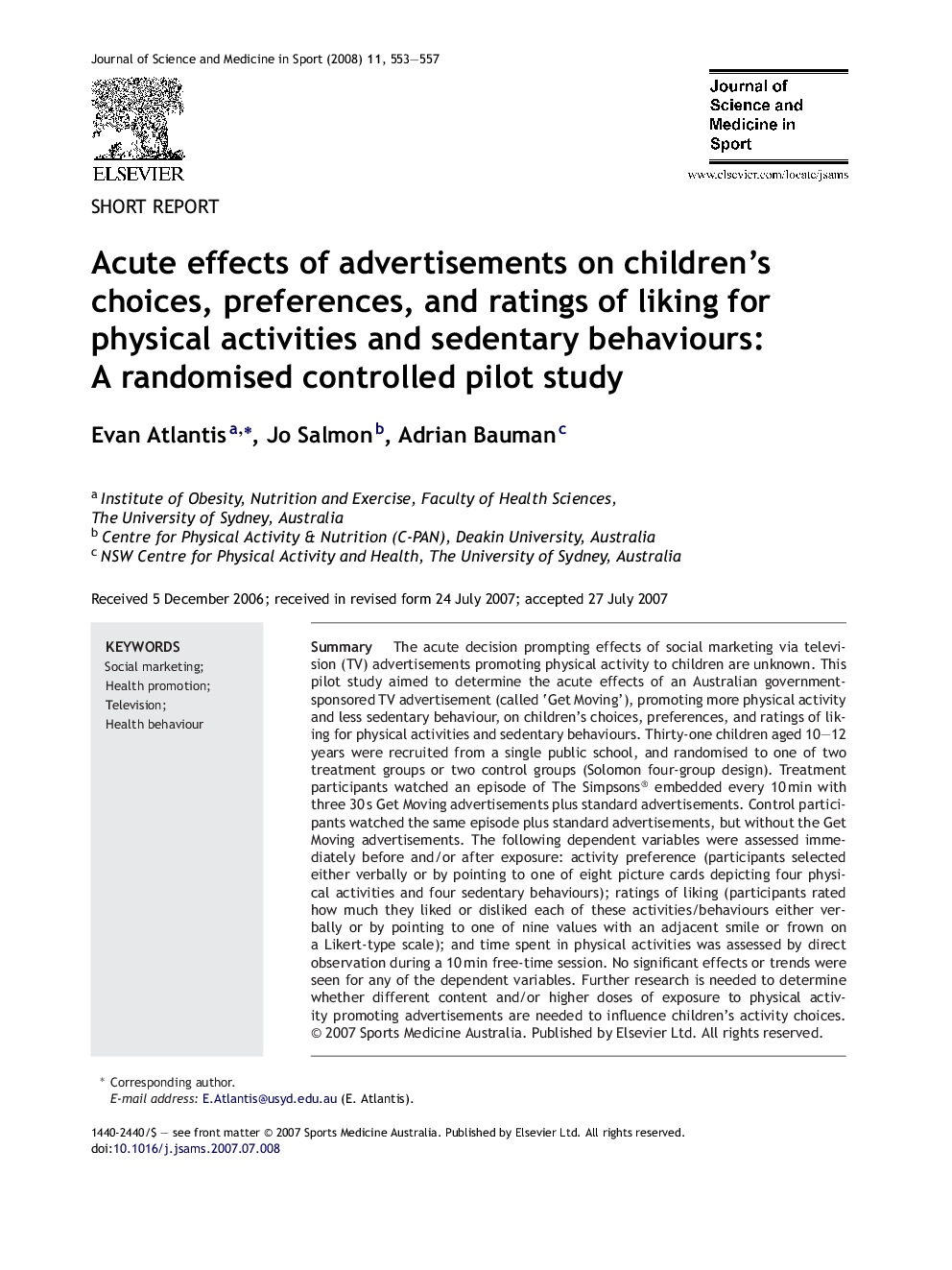| Article ID | Journal | Published Year | Pages | File Type |
|---|---|---|---|---|
| 2703330 | Journal of Science and Medicine in Sport | 2008 | 5 Pages |
SummaryThe acute decision prompting effects of social marketing via television (TV) advertisements promoting physical activity to children are unknown. This pilot study aimed to determine the acute effects of an Australian government-sponsored TV advertisement (called ‘Get Moving’), promoting more physical activity and less sedentary behaviour, on children's choices, preferences, and ratings of liking for physical activities and sedentary behaviours. Thirty-one children aged 10–12 years were recruited from a single public school, and randomised to one of two treatment groups or two control groups (Solomon four-group design). Treatment participants watched an episode of The Simpsons® embedded every 10 min with three 30 s Get Moving advertisements plus standard advertisements. Control participants watched the same episode plus standard advertisements, but without the Get Moving advertisements. The following dependent variables were assessed immediately before and/or after exposure: activity preference (participants selected either verbally or by pointing to one of eight picture cards depicting four physical activities and four sedentary behaviours); ratings of liking (participants rated how much they liked or disliked each of these activities/behaviours either verbally or by pointing to one of nine values with an adjacent smile or frown on a Likert-type scale); and time spent in physical activities was assessed by direct observation during a 10 min free-time session. No significant effects or trends were seen for any of the dependent variables. Further research is needed to determine whether different content and/or higher doses of exposure to physical activity promoting advertisements are needed to influence children's activity choices.
